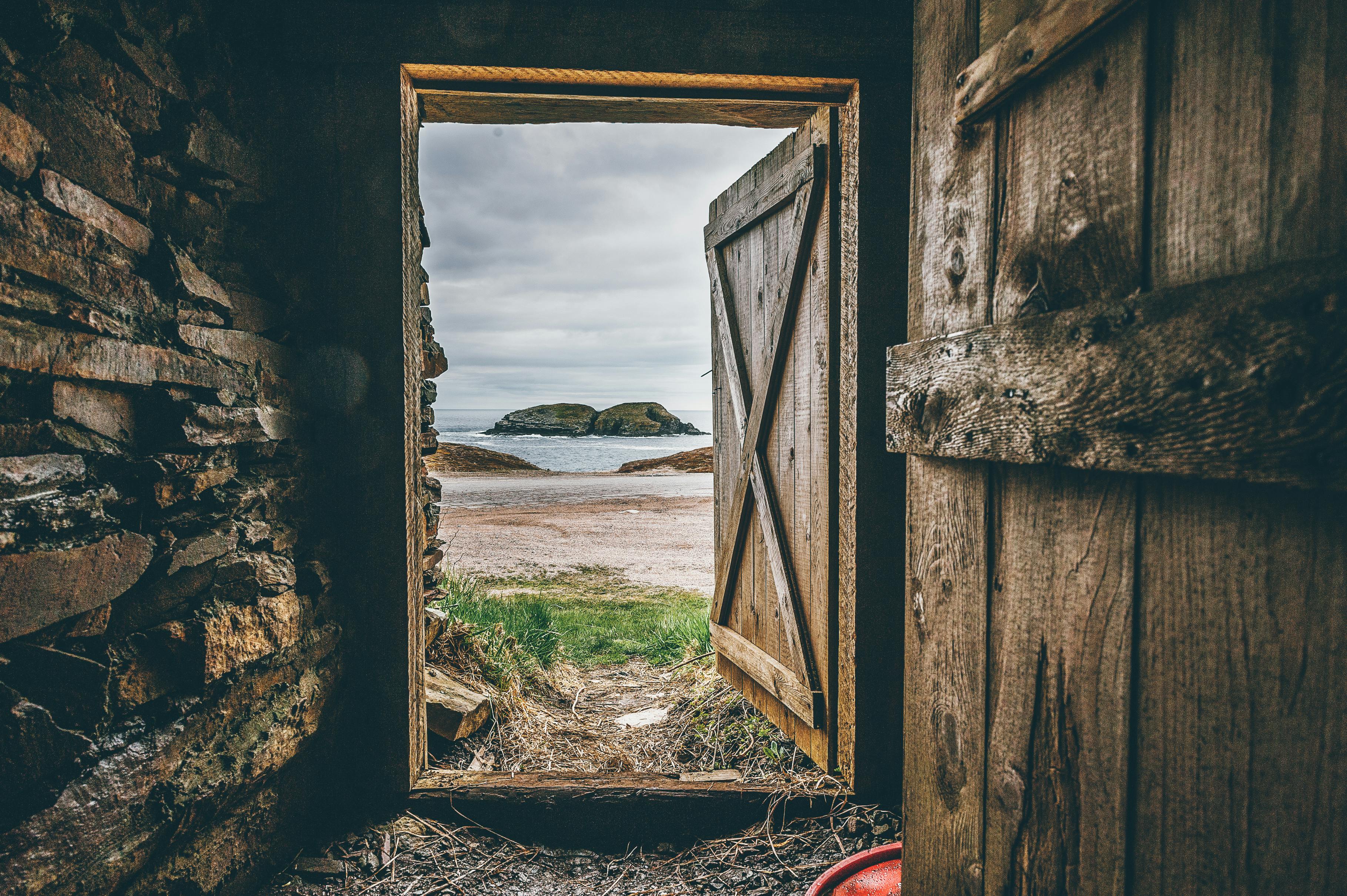Winterizing your RV is an important part of RV maintenance, and one of the most important steps is to blow out the water lines. Blowing out the water lines will remove any residual water inside and prevent them from freezing during cold weather. In this guide, we’ll explain exactly how to blow out RV water lines so that you can keep your RV in top condition.1. Begin by draining the RV’s onboard water tanks and disconnecting the RV from any sources of water, such as a city water connection or freshwater fill hose.
2. Turn off the main water valve and open all faucets to let air into the lines, including showers, sinks and toilet valves.
3. Use a small compressor to blow out the lines with air pressure. This should be done at all points where water is supposed to enter the RV, such as at the city water connection or filler hose. This will ensure that any remaining moisture is completely removed from the lines.
4. Once all of the lines have been blown out, turn off all of the faucets and then turn on the main water valve to make sure no leaks occur when you turn back on your fresh water source.
5. Check for any signs of leaks at each connection point, including showers, sinks and toilets. If you find any leaks, make sure to fix them before proceeding with your winterization process.
What You Need to Know Before Blowing Out RV Water Lines
Before you blow out your RV water lines, it is important to understand the process and have the right equipment. Blowing out your RV water lines is necessary to prevent damage from freezing temperatures. By removing all the water from the lines, you can avoid costly repairs or even a total replacement of the lines. Here are some tips for successfully blowing out your RV water lines.
Gather Your Supplies
The first step in blowing out your RV water lines is to gather all of the supplies that you will need. You will need a compressor or air pump, an air hose, and a blowout plug. Make sure that all of these items are rated for the pressure that you plan to use when blowing out your lines.
Install Blowout Plug
Once you have all of your supplies, you will need to install the blowout plug on your RV’s water system. This plug should be inserted into the service port on your RV’s water system and tightened securely with a wrench. This plug is designed to allow compressed air into the system while preventing any backflow of water during the blowout process.
Attach Air Hose
Next, attach one end of your air hose to the blowout plug and secure it with a clamp or tie wrap. Make sure that there are no leaks in this connection before continuing with the process. Once everything is secure and tight, attach the other end of your air hose to either an air compressor or an air pump and turn it on.
Blow Out Water Lines
Once everything is connected properly, turn up the pressure until it reaches its maximum rating for safety reasons and then open each faucet in turn until all of them are open at full blast. This will allow all of the remaining water in your RV’s water lines to be forced out through each faucet as well as through any other openings in your plumbing system such as shower heads or outdoor fixtures. When all of these fixtures have been blown out, close each one tightly before turning off the compressor or pump and disconnecting them from your RV’s plumbing system.
It is important to take precaution during this process as high-pressure can cause damage if done incorrectly. Be sure to follow these tips when blowing out your RV’s water lines in order to ensure a successful outcome!
Understanding the Process of Blowing Out RV Water Lines
Blowing out RV water lines is an important maintenance procedure to help protect your recreational vehicle from freezing temperatures in the winter months. This process removes all of the water from the lines, ensuring that no residual liquid remains which could freeze and cause damage. It is important to understand how to properly blowout your RV’s water lines, so you can be sure that your RV will be safe and ready for winter.
The first step in blowing out your RV’s water lines is to close off all of the valves on your water supply lines. This will prevent any additional water from entering into your system. You may also want to consider draining any external components such as shower pans or sinks, as these will hold onto any residual water which could freeze and cause damage. Once all of the valves are closed, you will need to attach an air compressor hose to one end of a blowout plug and the other end of the hose to an air compressor.
Once you have attached the air compressor hose and plugged it into an air outlet, you can turn on the air compressor and allow it to blow out all of the remaining water from your RV’s water lines. Make sure that you are using a high-pressure compressor, as this will help ensure that all of the remaining water is removed from the system. You should also take care not to exceed a pressure level of 40 PSI when blowing out your RV’s water lines, as this can cause damage to some components.
Once you have finished blowing out all of the remaining water from your RV’s water lines, turn off the air compressor and disconnect it from both ends. Make sure that you remove any excess moisture or debris which may have been left behind during this process before closing off any valves or outlets. Finally, open up each valve on your RV’s water supply line one at a time until all of them are open again. This will ensure that no residual liquid remains in any part of your system when temperatures begin to drop in winter months.
By following these steps when blowing out your RV’s water lines, you can help protect it against freezing temperatures and potential damage caused by residual liquid in its plumbing system. Be sure to always use caution when working with compressed gas equipment, such as an air compressor or propane tank, as these can be dangerous if used improperly.
Step 1: Drain All Water from the Freshwater Tank
The first step to winterizing your RV is to drain all of the water from the freshwater tank. This should be done before you start blowing out the water lines, as it will ensure there is no water left in any of the pipes. To do this, you’ll need to locate your freshwater tank and then open the valves or drains at both the top and bottom. You’ll also want to open all faucets, showers and flush any toilets until they are completely empty.
Step 2: Close All Valves and Faucets
Once you’ve drained all of the water from your system, make sure to close all of the valves or faucets that you opened. This includes both hot and cold water valves, as well as any outside showers or hoses that may have been connected. This will help prevent any additional air from entering your system when you begin blowing out the lines.
Step 3: Connect Air Compressor to City Water Inlet
Next, you’ll need to connect an air compressor to your RV’s city water inlet. This is usually located on the side or front of your RV, and it should have a threaded connection that is compatible with most air compressors. Once it’s connected, turn on both the air compressor and city water inlet valve.
Step 4: Open Valves and Faucets Inside Your RV
Now it’s time to open up all of the valves and faucets inside your RV one by one. Start with hot water first and then work your way through each fixture until they are all open. As you do this, make sure to monitor each valve for any signs of leaking or backflow.
Step 5: Turn Off Valves After Blowing Out Lines
Once all of your fixtures have been blown out with compressed air, turn off the valves one by one starting with hot water first. This will help ensure that no more air gets into your system when you’re done winterizing it. Finally, turn off both the city water inlet valve and air compressor before disconnecting them from each other.
Step 6: Disconnect Air Compressor
Once everything has been shut off properly, disconnect your air compressor from your RV’s city water inlet. Make sure to store it securely away until next year when you need it again for winterizing purposes!
Tools and Supplies Required for Blowing Out RV Water Lines
When preparing for the winter season, one of the most important maintenance tasks is to blow out your RV water lines. This ensures that all moisture is removed from the lines so that they don’t freeze and burst when the temperature drops. To do this properly, you will need to have the right tools and supplies on hand.
The most important item is a compressor or air blower that has enough power to force air through your RV’s plumbing system. You will also need an adapter so that you can connect your compressor to the RV’s water line. Once you have these items, you will also need various air fittings, valves and hoses so that you can safely route the air through your system without damaging any components.
In addition, it is helpful to have some type of antifreeze at hand in case there are still pockets of water left in the lines. You will also want to have some type of drain hose so that you can direct any residual water away from your RV as it is being blown out. Finally, it is always a good idea to wear protective goggles and gloves while performing this task.
Having the right tools and supplies on hand before attempting to blow out your RV’s water lines can make a big difference in how successful this process is. Make sure to double check what items you will need before getting started so that you can perform this important winterizing task with confidence.

Safety Precautions to Take When Blowing Out RV Water Lines
Blowing out RV water lines is an important part of winterizing an RV. It is important to take the proper safety precautions when doing this job. First and foremost, always wear safety glasses and gloves when performing any type of maintenance on an RV. Next, make sure the RV is parked on level ground with the water pump turned off and all faucets closed. You may also want to disconnect the power source to avoid any electrical hazards.
Before beginning, inspect all the water lines for any cracks or other damage. If any are found, they should be replaced or repaired before proceeding. Once the lines have been inspected, use a compressor or air tank to blow out each line with compressed air until all of the water has been removed. Make sure not to exceed 30 psi when using a compressor for this process as it can cause damage to the pipes. Once all of the lines have been blown out, open each faucet one at a time and check for any remaining water in each line before closing them again.
Finally, if you are using a chemical antifreeze solution in your RV’s pipes, make sure that you follow all of the manufacturer’s instructions carefully and do not mix different types of antifreeze solutions together as this can cause corrosion and other damage. Taking these simple steps will help ensure that your RV’s plumbing system is safe and ready for winter storage.
Tips For Easier and Faster Blowing Out of RV Water Lines
Blowing out RV water lines is an important step in winterizing your RV. It’s a process of forcing air through the lines to ensure that all water is removed so that the lines won’t freeze and burst. While it’s not the most exciting task, there are several tips that can make the job easier and faster.
First, it helps to use a good quality compressor with a large tank and plenty of power. The tank should have at least 20 gallons or more, and you should be able to get up to at least 125 psi when you turn on the compressor. This will help ensure that you have enough pressure to blow out all the water in the lines.
Another tip is to use an air hose adapter between your compressor and RV connection point. This will allow you to blow out both hot and cold water lines at once, which saves time compared to having to do each line separately. Additionally, make sure your air hose is long enough so that you can reach all of the connections on your RV without having to move it around too much.
It also helps to have all your tools ready before you start blowing out the lines. A good set of wrenches or a socket set will come in handy for loosening any stubborn connections, as well as for tightening them back up afterwards. Additionally, it’s a good idea to have a few buckets or containers handy for catching any water that may come out during the process.
Finally, make sure you start with low pressure when blowing out the lines so that you don’t damage any seals or fittings along the way. You can then gradually increase pressure until all of the water has been removed from the system. This will help ensure that everything remains intact throughout the process and reduce any potential problems down the road.
By following these tips, blowing out RV water lines can be an easy and fast process that will help keep your rig safe during cold winter months ahead.
Step 1: Prepare the RV Water Lines
Preparing the RV water lines for winterizing is an important step. Start by turning off the water supply to your RV before you begin. Then, open all faucets and flush toilets inside the RV to drain any remaining water. Note that it may take several minutes for all the water to drain completely. Additionally, make sure to close the RV’s hot water heater bypass valve and turn off any power sources that may be running to your RV’s plumbing system (such as a water pump).
Step 2: Install an Anti-Freeze Bypass Kit
Installing an anti-freeze bypass kit is essential for winterizing your RV’s plumbing system. This kit will allow you to connect a garden hose to your RV’s freshwater tank in order to flush it with non-toxic antifreeze. Make sure that the antifreeze you are using is explicitly designed for RVs and other vehicles, as regular antifreeze can be harmful if ingested.
Step 3: Start Pumping Antifreeze into Your System
Once you have connected a garden hose with antifreeze to your freshwater tank, turn on your RV’s water pump and begin pumping antifreeze through the system. This process should take anywhere from 15-30 minutes as antifreeze is pushed through every inch of piping in your RV. Once this process has been completed, turn off the water pump and disconnect the garden hose from your freshwater tank.
Step 4: Flush Out Any Remaining Antifreeze
After disconnecting the garden hose from your freshwater tank, turn on all faucets inside of your RV one at a time until you see clear, odorless liquid coming out of each one. This will ensure that all remaining antifreeze has been flushed out of each pipe in your system. Make sure that all faucets are left open after this process has been completed.
Step 5: Close Up Your System
Once all of the remaining antifreeze has been flushed out, it’s time to close up your system. Begin by turning off all faucets in your RV and opening up any valves or taps that were previously closed (such as a hot water heater bypass valve). Lastly, turn on the main water supply back on so that it can provide fresh drinking water next time you use it.
By following these five simple steps, you can easily winterize your RV’s plumbing system and protect it from any potential damage caused by freezing temperatures.

Conclusion
Blowing out your RV water lines is an important step in preparing your RV for winter storage. It helps to prevent damage to the water lines caused by freezing temperatures. The process is relatively straightforward and can be accomplished with a few simple tools. You’ll need a compressor, an air hose, and a blowout plug. First, locate the blowout plug on your RV’s water system, then attach the air hose to the plug. Attach the other end of the hose to the compressor and turn it on. Slowly increase the pressure until all of the water has been forced out of the lines. Once you’re done, disconnect the air hose and replace the blowout plug to finish up.
By following these steps, you can help ensure that your RV’s plumbing system is protected from freezing temperatures during winter storage. Taking care of your RV’s plumbing system will save time and money in future repairs or replacements that may be needed due to preventable damage caused by cold weather.
Blowing out your RV water lines isn’t difficult but it does require some attention to detail. Make sure you use proper safety measures when using a compressor and follow all of the steps outlined in this guide for best results. With proper preparation, you can rest assured that your RV will be ready for next season without any plumbing issues due to cold weather!

